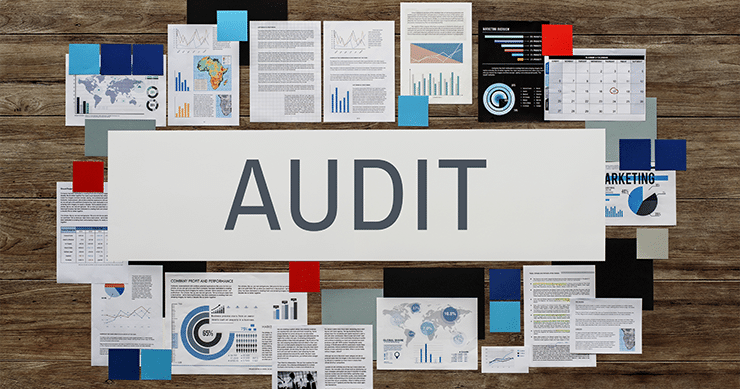What Is Audit Documentation?
Audit documentation is a detailed account of procedures, evidence, and conclusions collected during an audit. It includes working papers, checklists, and memos that support the evidence gathered and the auditor’s findings. The primary purpose of audit documentation is meticulously document the planning, execution, and supervision of an audit. Additionally, the importance of audit documentation is in the groundwork it lays for future audits.

Types of Audit Documentation: Building a Complete Picture
The eight primary types of audit evidence include physical examination, confirmations, documentary evidence, analytical procedures, oral evidence, the accounting system, reperformance, and observatory evidence. These types provide auditors with a comprehensive toolkit to ensure the accuracy and integrity of assessed information.
Physical Evidence:
Auditors rely on their senses, such as sight, touch, and listening to stakeholders, to gather physical evidence. For example, they might physically inspect data centers and equipment to confirm their existence and condition.
Numeric Evidence:
Numeric evidence involves auditors using mathematical calculations to validate data and KPIs, ensuring numbers are correctly computed.
Analytical Evidence:
Analytical evidence relies on data comparisons and patterns. For instance, if an expense category suddenly spikes far beyond historical averages, auditors take notice and investigate further, like uncovering a red flag in financial data.
Testimonial Evidence:
Testimonial evidence involves auditors engaging in discussions and interviews with people, seeking oral responses. However, it’s essential to remember that oral evidence is often considered the least weighty and should be corroborated by other forms due to its potential for bias or inaccuracy.
Documentary Evidence:
Documentary evidence is obtained by examining records and documents. Auditors review various documents, ranging from those generated and controlled by the organization to documents received from external sources.
Start Getting Value With
Centraleyes for Free
See for yourself how the Centraleyes platform exceeds anything an old GRC
system does and eliminates the need for manual processes and spreadsheets
to give you immediate value and run a full risk assessment in less than 30 days
Is Audit Evidence Collection The Same As Audit Documentation?
Audit evidence collection is the initial stage of the audit process. It involves gathering information and data that will later be used to assess an organization’s financial statements, internal controls, and compliance with regulations. The primary purpose of audit evidence collection is to lay the groundwork for the audit itself, ensuring that auditors have the necessary information to proceed effectively.
Audit Documentation is a comprehensive record of the audit procedures, evidence, and conclusions collected during the audit. It acts as the central repository of all audit-related information and serves several essential functions in the audit process.
Differences in Documentation for Internal vs. External Audits
An organization’s internal audit team conducts internal audits and focus on evaluating internal controls, compliance, and operational efficiency. The primary purpose is to improve processes and risk management. In contrast, external audits are performed by independent audit firms and aim to provide an objective assessment of an organization’s financial statements, compliance with laws and regulations, or specific industry standards.
Internal audit documentation and external audit documentation requirements may vary depending on the nature of the framework or standard and the organization’s industry and regulatory environment. The choice to undergo an external audit often provides greater assurance to stakeholders and customers.
Common Audits in Information Security
- ISO 27001: ISO 27001 is an international standard for information security management systems (ISMS). Organizations can self-assess their compliance with ISO 27001, but many undergo external audits to obtain ISO 27001 certification.
- HIPAA (Health Insurance Portability and Accountability Act): Healthcare organizations in the United States are subject to HIPAA requirements. While there isn’t a specific certification, organizations must conduct internal audits and assessments to ensure compliance.
- GDPR (General Data Protection Regulation): Organizations that handle the personal data of European Union citizens may need to perform self-assessments to ensure GDPR compliance. Regulatory authorities can also conduct audits.
- NIST Cybersecurity Framework: The National Institute of Standards and Technology (NIST) framework provides guidelines for improving cybersecurity. Many organizations conduct self-assessments to measure their cybersecurity maturity against NIST standards.
- PCI DSS (Payment Card Industry Data Security Standard): Organizations that handle payment card data may need external audits to ensure compliance with PCI DSS requirements.
- SOC 2 (System and Organization Controls 2): Service organizations like data centers and cloud providers undergo SOC 2 audits to demonstrate security, availability, processing integrity, confidentiality, and privacy controls. SOC 2 reports assess the controls related to the security and privacy of customer data. These external audits are crucial for service organizations that handle customer data.
- SOC 1 (formerly SAS 70): SOC 1 reports are used to assess the internal controls over financial reporting of service organizations. Like SOC 2, they typically require external audits.
Audit Preps Made Easy with Centraleyes
Auditing is built on meticulous processes and careful documentation to ensure transparency, accuracy, and credibility. From logging processes to collecting evidence, documentation plays a pivotal role in ensuring compliance and demonstrating adherence to industry standards like ISO27001 or SOC2.
Are you prepared to navigate the complex world of compliance audits? Learn how to establish a solid audit trail and leverage automated GRC tools to simplify and enhance your audit processes.
Start Getting Value With
Centraleyes for Free
See for yourself how the Centraleyes platform exceeds anything an old GRC
system does and eliminates the need for manual processes and spreadsheets
to give you immediate value and run a full risk assessment in less than 30 days





